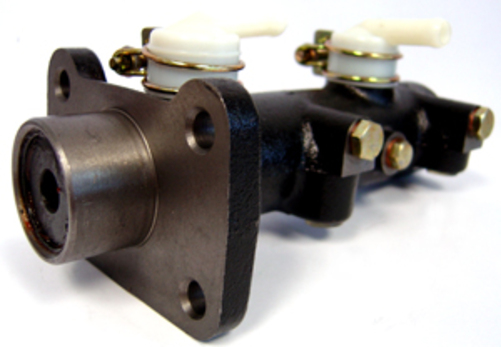Understanding the Brake Master Cylinder: The Heart of Your Braking System
When it comes to vehicle safety, the braking system plays a crucial role. At the core of this system lies the brake master cylinder, an essential component responsible for converting the force applied to the brake pedal into hydraulic pressure. In this article, we will delve into the brake master cylinder's functions, components, and maintenance, highlighting its significance in ensuring effective and reliable braking.
The Role of the Brake Master Cylinder:
The brake master cylinder is a hydraulic device that operates as the primary force multiplier in the braking system. When the driver depresses the brake pedal, it activates a piston within the master cylinder. This piston generates hydraulic pressure that is then transmitted through the brake lines to the individual wheel cylinders or calipers, which in turn apply the necessary force to slow down or stop the vehicle.
Components of the Brake Master Cylinder:
2.1 Reservoir: The master cylinder has a reservoir that stores brake fluid. This reservoir allows for the compensation of fluid loss due to wear of the brake pads or shoes over time. It also acts as a buffer against air entering the system, ensuring a consistent hydraulic supply.
2.2 Piston(s): The master cylinder contains one or two pistons that move forward when the brake pedal is depressed. These pistons create the hydraulic pressure necessary for effective braking. Single-piston master cylinders are typically found in vehicles with front disc and rear drum brakes, while dual-piston master cylinders are common in vehicles with four-wheel disc brakes.
2.3 Seals: To prevent leakage of brake fluid, the master cylinder is equipped with rubber seals around the piston(s). These seals ensure a tight and reliable hydraulic system, maintaining proper braking performance.
Maintenance and Troubleshooting:
3.1 Brake Fluid: Regularly checking and maintaining the brake fluid level in the master cylinder reservoir is crucial. Brake fluid should be replaced periodically, following the manufacturer's recommendations. Contaminated or old brake fluid can compromise the performance of the entire braking system.
3.2 Bleeding the System: Air bubbles trapped in the brake lines can affect brake pedal feel and reduce braking efficiency. Bleeding the brake system ensures the removal of air and allows for optimal hydraulic pressure. This procedure should be performed whenever the brake fluid is replaced or if there are any signs of a spongy brake pedal.
3.3 Diagnosing Issues: If you experience a loss of brake pedal firmness, fluid leakage, or reduced braking power, it may indicate a problem with the master cylinder. These symptoms should not be ignored, as they can compromise your safety on the road. Consult a qualified mechanic to diagnose and address any issues promptly.
The brake master cylinder serves as the heart of your vehicle's braking system, converting the force exerted on the brake pedal into hydraulic pressure. Understanding its functions, components, and maintenance is vital for ensuring optimal braking performance and safety. Regular checks of brake fluid levels, bleeding the system when necessary, and addressing any signs of malfunction are essential steps in maintaining the integrity of the brake master cylinder. By giving due attention to this critical component, you can drive with confidence, knowing that your braking system is operating at its best.
For More Info:-

Comments
Post a Comment